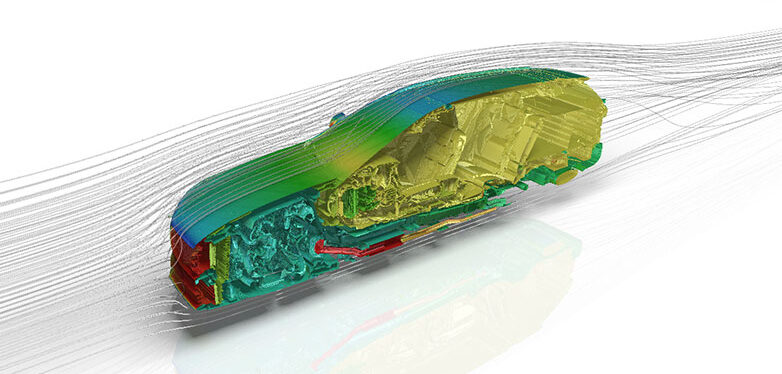Simulation specialist Hexagon says it has demonstrated how complex CFD (computational fluid dynamics) simulations, that were previously too time consuming and expensive to consider, can be achieved using capabilities derived from the world’s fastest supercomputer, Fugaku, located in Japan.
CFD simulations require significant computational power and resource. Consequently, engineers have to spend many hours simplifying designs to reduce run times on available hardware. With this remaining a largely manual process, and with engineers increasingly being challenged to ‘scale-up’ simulations to manage more elements, the effort needed for complex simulations becomes prohibitive.
Now, Hexagon’s Cradle CFD customers will have the opportunity to tap into similar capabilities to those of the ARM-based Fugaku computer architecture, to run complex simulations quickly. This has been made possible through a partnership that enables the use of the Cradle CFD software on Fujitsu’s commercially available Supercomputer PRIMEHPC series, which utilizes the same technology as the Fugaku machine.
Not only can this accelerate simulation programs, the Fugaku architecture also uses approximately a third of the energy of current HPC architectures, reducing cost and improving environmental sustainability.
Hexagon says its experts collaborated closely with Fujitsu to tune the Cradle CFD code to run on Fugaku and complete test simulations. For example, a typical family car was simulated in its entirety, using a model comprising 70 million elements using 960 cores, run until steady state using the RANS equation over 1000 cycles.
The company also highlights turbulent flow simulations as another ideal application for the new capability. Hexagon states its team successfully completed a test simulation of transonic compressible fluid around an aeroplane, which consisted of approximately 230 million elements and was tested using 4,000 nodes (192,000 computing cores).
Roger Assaker, president design and engineering, Manufacturing Intelligence division, Hexagon, said, “Simulation holds the key to innovations in aerospace and e-mobility. Advances such as the low-power Fugaku supercomputing architecture are one of the ways we can tap into these insights without costing the Earth, and I am delighted by what our Cradle CFD team and our partners have achieved.”
Masahide Fujisaki, executive director of Fujitsu Limited, said, “Fujitsu was pleased to have the chance to work with Cradle to tune and validate the performance of the scFLOW’s solver for large models on the supercomputer Fugaku and the Fujitsu Supercomputer PRIMEHPC series, which utilizes the technology of Fugaku.
“In the future, we look forward to working together with vendors to optimize commercial applications and contribute to the industrial use of Fugaku, while simultaneously offering the Fujitsu Supercomputer PRIMEHPC series to manufacturers and other companies so that the results of this work can be widely used in industry.”



